Storm in an ash cloud: Electrifying shots of Mexican volcanic eruption show lightning bolts striking inside its ash plume
Lightning flash spotted in the ash cloud of the Colima Volcano which is 301 miles west of Mexico City
Strikes caused by high levels of electric charge building up as ash particles rub together
Bolts can heat surrounding air to 3,000°C and melt ash in the cloud into glassy spheres, scientists discovered
There are few things more beautiful – or terrifying – than the menacing flash of lightning bolts within a volcanic ash cloud.
The latests picture, captured by an amateur photographer as the Colima volcano in Mexico spews out a plume of ash and lava, reveals the raw power of a volcanic eruption.
Hernando Rivera Cervantes took the pictures as local authorities warned those living around the volcano, which is also known as the Fire volcano, to prepare for a possible evacuation.
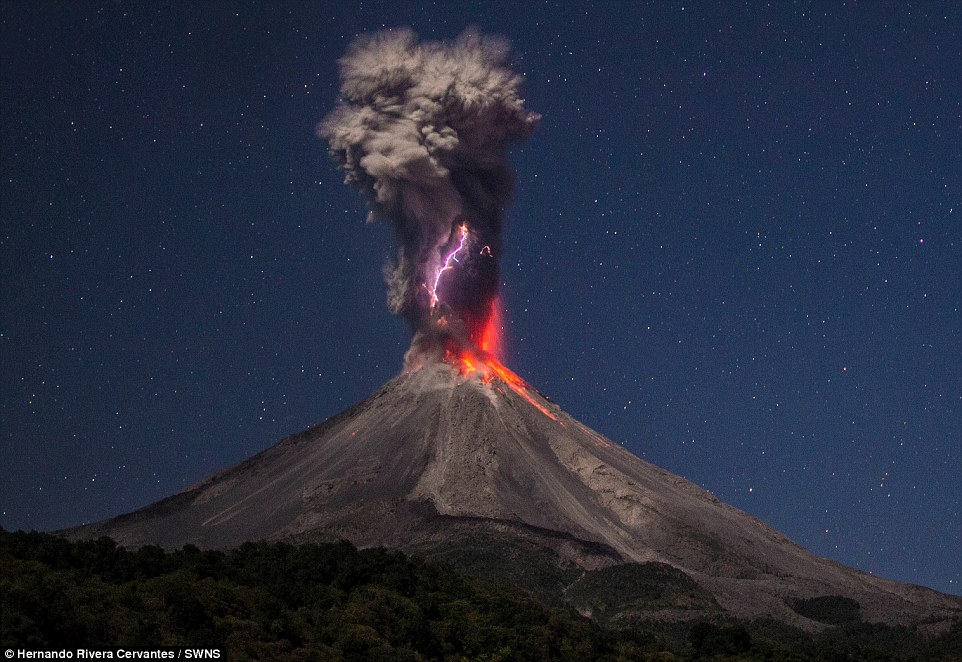
Lightning strikes inside the enormous ash cloud thrown into the air by the Colima volcano (above) in Mexico
The 12,400 feet (3,800 metre) high volcano, which first erupted in 1576, is one of the most active volcanoes in Mexico.
Mr Cervantes spent eight hours watching the volcano as it threw ash up to 1.8 miles (three kilometres) into the atmosphere before managing to capture the rare picture.
He said: ‘I waited for eight hours, knowing something was going to happen. When the lightning arrived it was magical. An unforgettable experience.’
These blots of lightning are thought to occur due to the build up of electric charge in the ash cloud as the particles rub against each other.
Just like in a thunder cloud, this charge eventually builds up until it seeks a path through to the ground as lightning.
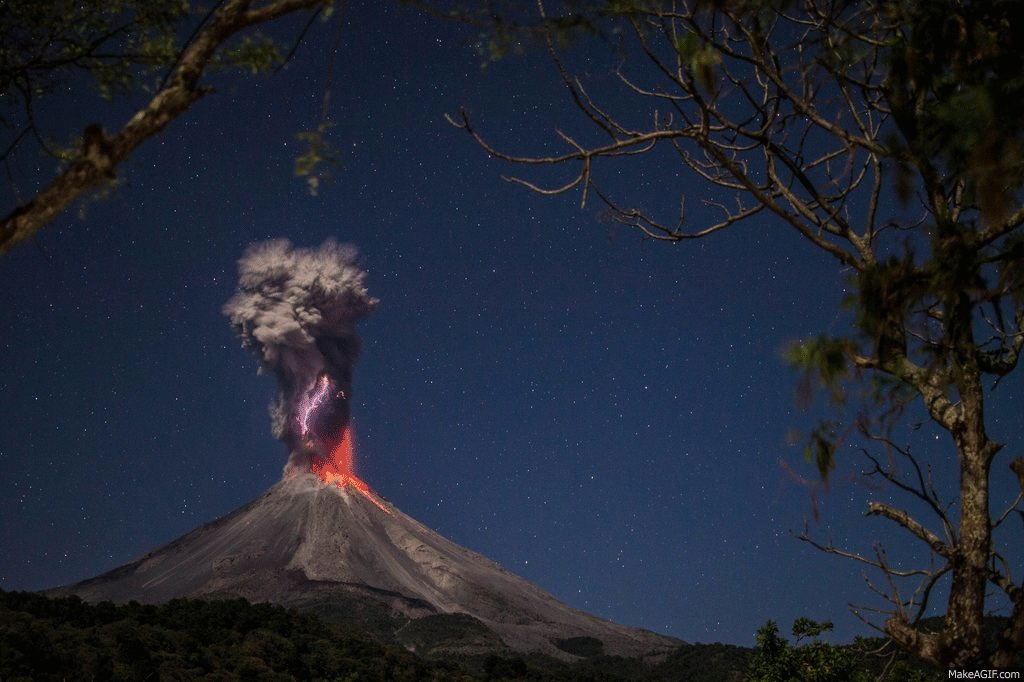
This sequence of images captured by photographer Hernando Rivera Cervantes show the lightning flashes as the Colima volcano erupted
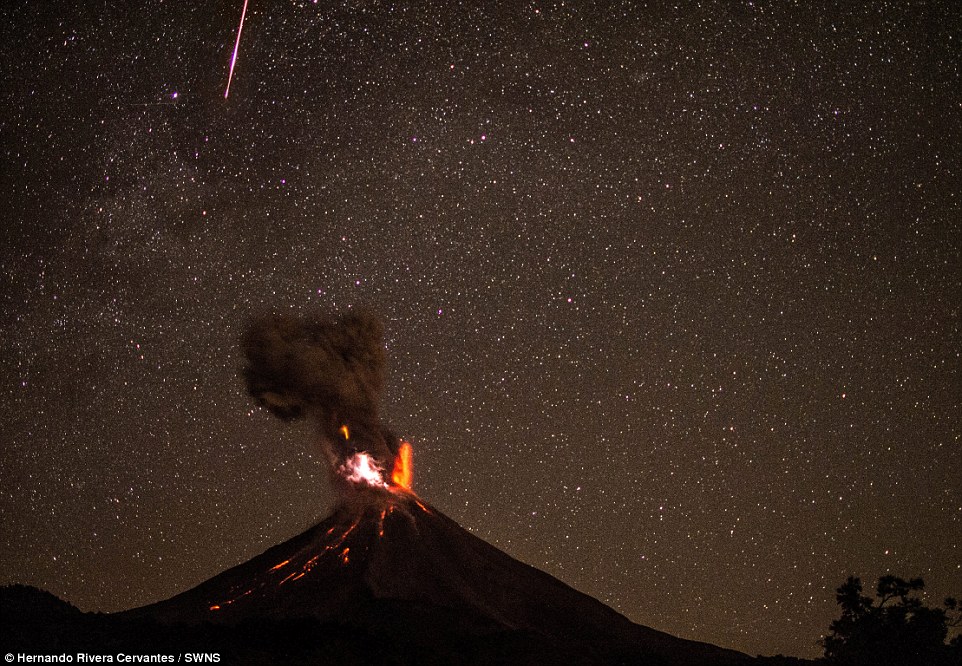
Mr Cervantes also managed to capture this night-time image above of lava spilling from the erupting volcano
Earlier this month scientists discovered that it is this lightning that is responsible for making the glass spheres that can appear in volcanic rocks.
They found that the intense heat generated by the lightning bolts causes the ash to melt into spherules of smooth glass.
A bolt of volcanic lighting can heat the surrounding air to more than 3,000°C, according to the researchers from the University of Alabama in Tuscaloosa.
Dr Kimberly Genareau, a volcanologist at the University of Alabama, said their findings suggested that the role lightning plays in volcanic eruptions may be under reported.
Writing in the journal Geology, she said: ‘We refer to this new morphological classification of ash grains as lightning-induced volcanic spherules (LIVS).
‘Observation of LIVS in tephras (volcanic rocks) will provide evidence of lightning occurrence during eruptions where lightning was not directly observed or documented.’
The Colima volcano is actually one of three volcanic domes that make up the Colima Volcanic complex in the Mexican state of Colima, 301 miles west of Mexico City.
It has erupted around 40 times since its first recorded activity in 1576. There are now around 300,000 people living in it shadow.
The volcano has a history of large and explosive eruptions, which has meant it is also one of the most studied volcanoes in Mexico.
Although lightning in volcanic ash clouds has been observed for a long time, scientists have only recently begun to understand what causes it.
The Colima volcano is regarded as one of the most dangerous in Mexico due to its large explosive eruptions
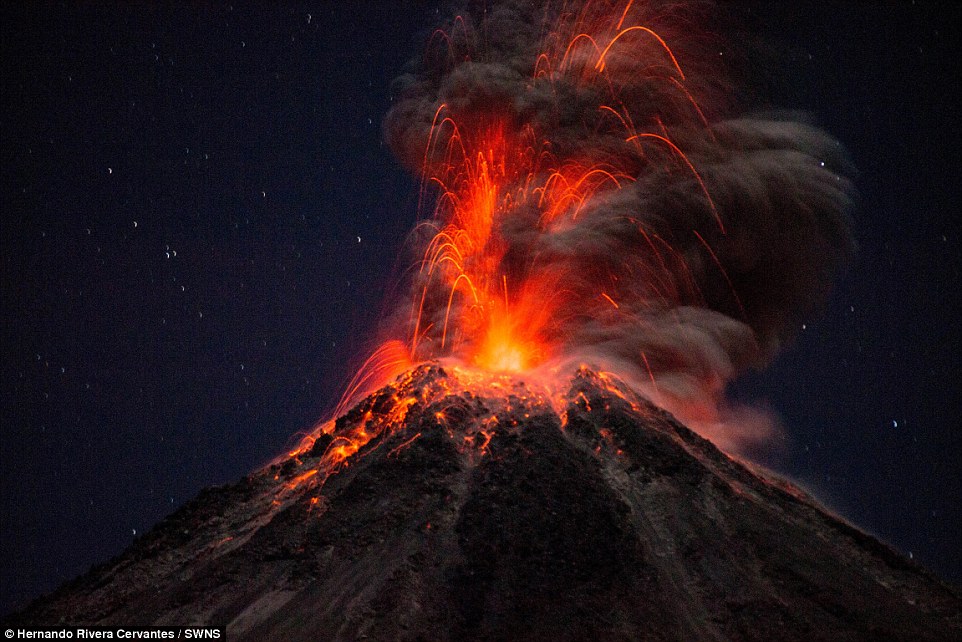
Mr Cervantes (shown above) spent eight hours waiting to capture his stunning images of the Colima volcano
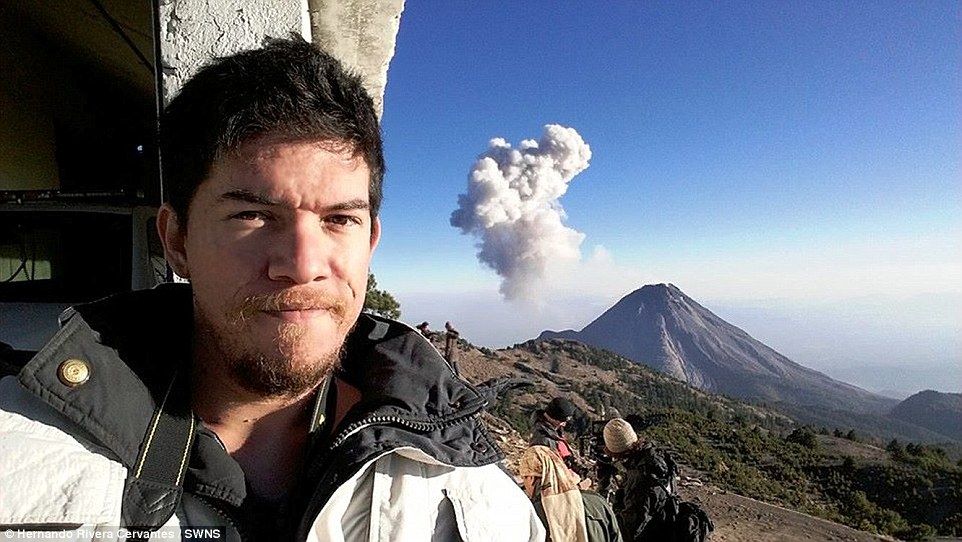
Getting close enough to an erupting volcano is dangerous, so scientists at the Ludwig Maximilian University of Munich recreated volcanic lightning in a lab.
In 2013 they suspended volcanic ash gathered from sites around the world in a chamber filled with argon gas, forcing the concoction through a narrow tube.
They found that the movement of ash particles against each other as they go from the compressed environment under the Earth’s surface into the atmosphere during an eruption causes a built of up static charge.
When the ash reaches the atmosphere, the energy is discharged as lightning bolts.

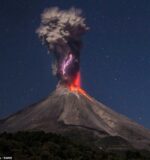





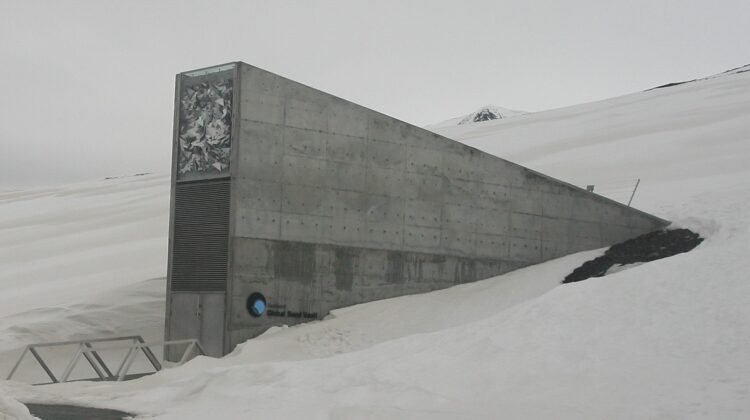
 Photographer Finds Locations Of 1960s Postcards To See How They Look Today, And The Difference Is Unbelievable
Photographer Finds Locations Of 1960s Postcards To See How They Look Today, And The Difference Is Unbelievable  Hij zet 3 IKEA kastjes tegen elkaar aan en maakt dit voor zijn vrouw…Wat een gaaf resultaat!!
Hij zet 3 IKEA kastjes tegen elkaar aan en maakt dit voor zijn vrouw…Wat een gaaf resultaat!!  Scientists Discover 512-Year-Old Shark, Which Would Be The Oldest Living Vertebrate On The Planet
Scientists Discover 512-Year-Old Shark, Which Would Be The Oldest Living Vertebrate On The Planet  Hus til salg er kun 22 kvadratmeter – men vent til du ser det indvendigt
Hus til salg er kun 22 kvadratmeter – men vent til du ser det indvendigt  Superknepet – så blir snuskiga ugnsformen som ny igen!
Superknepet – så blir snuskiga ugnsformen som ny igen!  Meteorite That Recently Fell in Somalia Turns Out to Contain Two Minerals Never Before Seen on Earth
Meteorite That Recently Fell in Somalia Turns Out to Contain Two Minerals Never Before Seen on Earth  Nearly Frozen Waves Captured On Camera By Nantucket Photographer
Nearly Frozen Waves Captured On Camera By Nantucket Photographer  It’s Official: Astronomers Have Discovered another Earth
It’s Official: Astronomers Have Discovered another Earth 